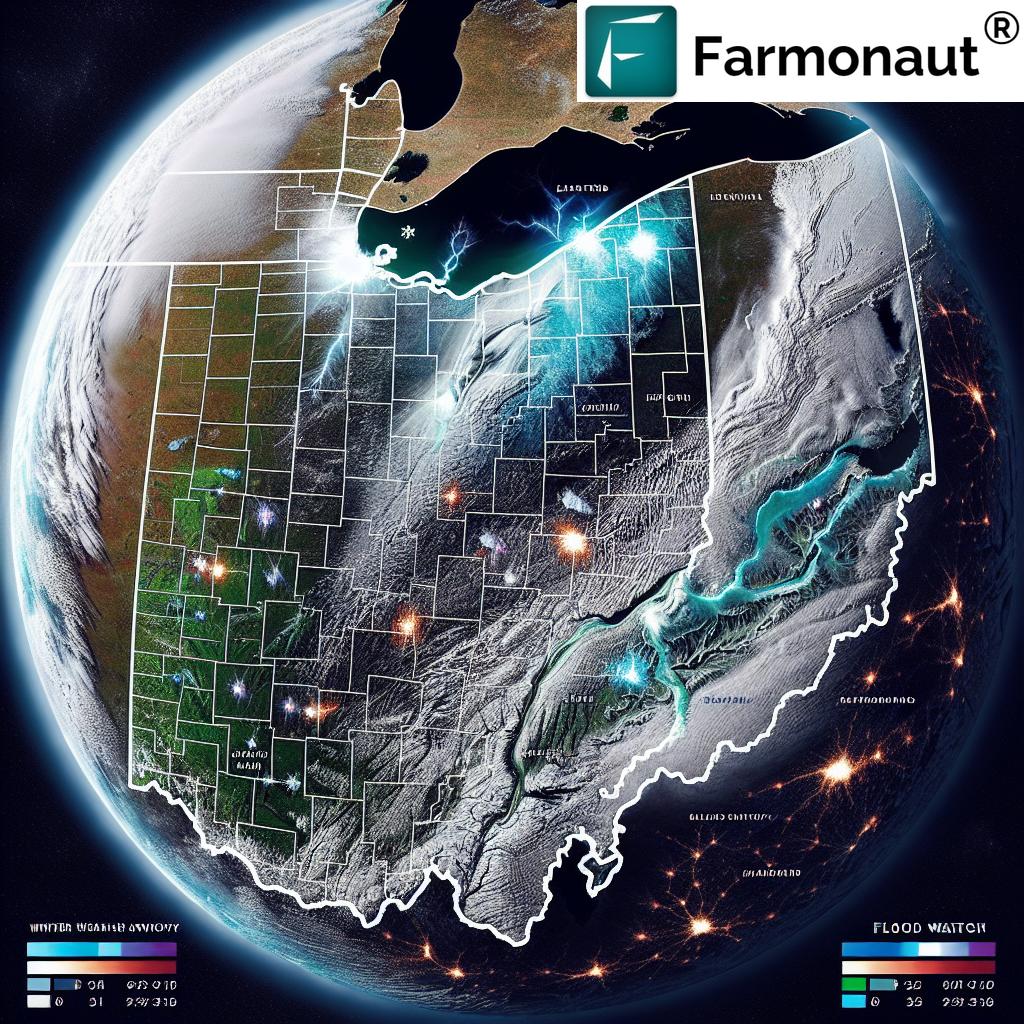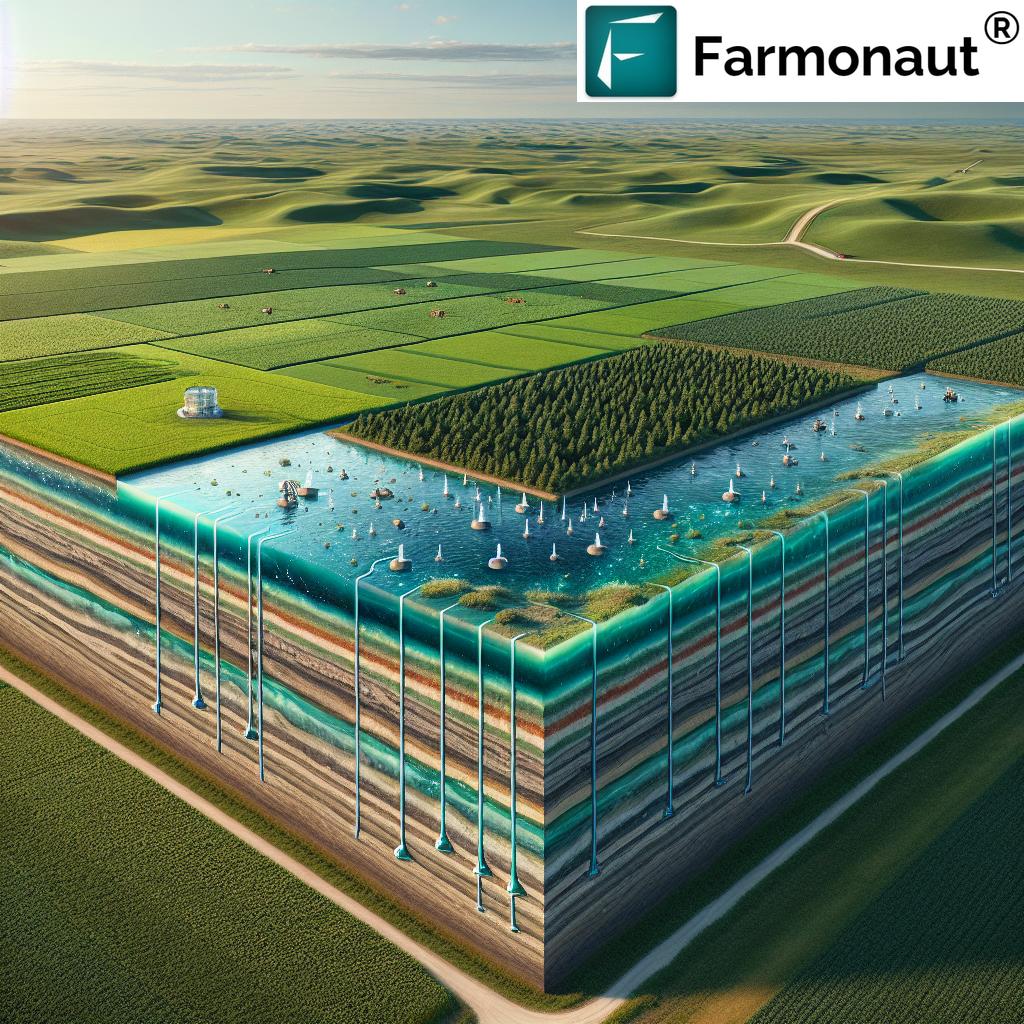1849 Gold Rush: Impact on California Agriculture
“The 1849 Gold Rush increased California’s population by over 300%, accelerating agricultural expansion and new farming practices.”
Introduction
The 1849 Gold Rush, often referred to simply as the California Gold Rush 1849, remains one of the most transformative events in United States history. We often hear tales of gold, fortune seekers, and rapid settlement, but the profound impact of this era on agriculture, infrastructure, and sustainable resource management is equally noteworthy, especially as we look toward 2026 and beyond.
The discovery of gold at Sutter’s Mill in 1848 sparked a massive population surge, which created unprecedented demand for food, transportation networks, and essential supplies. In this comprehensive analysis, we connect the rapid changes initiated by the gold rush 1849 with today’s modern practices, examining the lasting legacy that continues to shape California’s status as an agricultural hub, inform sustainable management approaches, and influence environmental policy.
We’ll also explore the role of advanced technology—including Farmonaut’s satellite-driven agricultural, mining, and infrastructure management solutions—in addressing the ongoing challenges and opportunities that echo from the 1849 era to 2026.
Historical Background of the 1849 Gold Rush
The California Gold Rush 1849 began with the discovery of gold at Sutter’s Mill in January 1848. The news triggered an influx of over 300,000 prospectors—the “Forty-Niners”—from across the United States and abroad. With an economic boom fueled by “gold fever,” California’s population and urban centers rapidly expanded.
- Prior to the rush, California’s economy was mostly based on ranching (especially cattle) and modest farming communities established by Spanish and Mexican settlers.
- After the discovery, fields and towns near mining areas saw an explosion in activity and growth.
- The gold-driven wealth not only attracted single miners but also entire families, merchants, and agricultural entrepreneurs.
While the focus was initially on gold extraction, these sweeping demographic, economic, and environmental shifts soon laid the groundwork for lasting changes in California’s agricultural development and resource management policies.
Population Boom and Its Effect on California Agriculture
Perhaps the most transformative impact of the gold rush 1849 was the rapid, unprecedented population surge in California. This demographic transformation created a massive demand for food and fundamentally altered the region’s agricultural landscape.
Let’s examine how the influx of people—a direct result of the 1849 gold discovery—catalyzed a boom in California’s agricultural economy:
- Skyrocketing Demand for Produce and Livestock: The tens of thousands of miners isolated from traditional food sources led to spiking prices for fresh produce, grains, vegetables, and livestock.
- Farm Expansion: With ranchers and farmers seizing the opportunity, the amount of cultivated land expanded significantly. California evolved from a region of modest family plots to a national agricultural powerhouse.
- Innovation and Intensification: Intensive farming practices emerged. New crop varieties like wheat, barley, and vegetables were introduced to meet the growing needs—and could be transported efficiently to mining camps.
- Permanent Agricultural Economy: The agriculture boom, which began as a response to the 1849 gold rush, established California’s reputation as an essential, vital hub for food production in the United States.
The legacy of this transformation remains profoundly visible today. As of 2026, California is still responsible for producing a significant share of the nation’s fruits, vegetables, and nuts—making it an enduring agricultural center not only for the western states but the world at large.
Comparative Impact Table: Before and After the Gold Rush 1849
A clear way to understand the impact of the gold rush 1849 on California’s agriculture and environmental resource management is to review a side-by-side comparison between the pre- and post-gold rush eras.
| Aspect | Pre-Gold Rush (Est. 1848) | Post-Gold Rush (Est. 1855) |
|---|---|---|
| Crop Diversity | Limited (mostly mission wheat, barley, some vegetables) | Significantly increased (wheat, barley, corn, potatoes, fresh produce, fruit trees) |
| Irrigation Methods | Basic ditches, small-scale irrigation | New irrigation canals, expanded water management |
| Land Use | < 50,000 acres actively farmed | > 500,000 acres under agriculture by 1860 |
| Water Consumption | Low—rain-fed or minimal irrigation | High—increased reliance on surface & diverted water |
| Sustainable Practices | Minimal focus, traditional crop rotation | Emerging awareness as soil erosion & pollution rise |
| Environmental Impact | Relatively balanced ecosystems | Significant disruption—deforestation, siltation, water quality degradation |
“By 1860, California’s farmland had grown from virtually zero to over 500,000 acres post-Gold Rush, demanding sustainable management.”
Explosive Growth in Agriculture: 1849 Gold Rush Impact
The true boom in California’s agriculture can be traced back to the demand created by the gold rush 1849. The influx of miners and prospectors spurred an urgent need for food and essential supplies, forever changing the agricultural economy of the region.
How the Gold Rush 1849 Transformed Farming Practices
- Intensive Land Cultivation: Previously, much of the land was used for extensive grazing or left untouched. With new opportunity, farmers expanded the area of cultivated bottomlands, converted pasture to cropland, and embraced more sophisticated farming methods.
- New Crops and Varieties: To meet the diverse and escalating needs of miners and townsfolk, farmers introduced new crops—notably, wheat, barley, potatoes, and vegetables. Fruit trees and vineyards soon followed, laying the foundation for California’s grape and wine industries.
- Livestock Boom: Meat demand soared as both staple and luxury. Livestock breeding and ranching became more intensive, and herds were managed more systematically to supply urban and mining markets.
- Irrigation and Water Infrastructure: The necessity for reliable food led to investment in irrigation canals, water wheels, and ditches—the precursors to modern water management systems still essential to California agriculture today.
- Transportable Food Production: Crops and livestock required efficient networks to move goods across rough terrain to scattered mining camps and rapidly-growing urban centers.
By the mid-1850s, California had become an established hub for food production in the western United States—a reputation it maintains well into 2026 and beyond.
Mining, Farming, and Agricultural Shifts
The interrelationship between mining and agriculture during the gold rush 1849 period cannot be overstated. Extraction of mineral wealth was the engine driving explosive population growth, but it was also a cause of significant environmental challenges—and a catalyst for lasting innovation in food production and land management.
Mining’s Influence on Agriculture: Key Ways
- Resource Competing Demands: Water was essential both for placer and hydraulic mining and for irrigating farmlands. Often, these uses were in direct competition, driving early water rights litigation and management systems.
- Labor Shifts: Some failed “Forty-Niners” abandoned mining for farming, bringing techniques, experiences, and a willingness to innovate. This workforce diversification helped drive California’s shift toward large-scale, market-oriented agriculture.
- Settlement Patterns: Mining created temporary camps that often grew into permanent settlements and trading hubs. Surrounding lands evolved to support local economies—by 1860, small farms and ranches surrounded many mining towns.
- Technology Transfer: Methods in mining, such as hydraulic engineering, influenced the construction of dams, canals, and irrigation systems for agriculture—advances vital to California’s long-term food security.
These intertwined practices and resource disputes initiated regulatory frameworks and environmental policies that now guide sustainable agriculture and mining operations in California.
Advancements in Infrastructure & Transportation Networks
As the population surged, the need for reliable transportation and infrastructure to support agriculture and supply chains became a defining aspect of California’s 19th-century development. The gold rush 1849 pushed the region to build the networks we still rely on today.
Key Infrastructure Developments Triggered by the Gold Rush 1849
- Roads & Turnpikes: Early footpaths and wagon trails gave way to constructed roads, facilitating the movement of goods (particularly food and supplies) from coastal urban centers to remote mining camps.
- Railroads: The need for rapid, efficient transportation spurred the growth of early rail lines. By the 1860s, railroads were revolutionizing how crops and products moved from farms to consumers.
- River & Sea Ports: San Francisco and Sacramento rapidly expanded their port facilities to handle enormous inbound and outbound traffic of supplies, people, and commerce.
- Urban Market Centers: Towns originally established during the gold rush 1849 evolved into bustling urban markets, trading centers, and storage hubs—cornerstones of California’s economic engine.
- Public-Private Infrastructure: The era saw some of the first large-scale public-private partnerships—private interests and local governments collaborating to fund essential infrastructure.
Remarkably, many modern highways, rail lines, and urban layouts in California, even as we move into 2026, trace their origins to foundational infrastructure built during the post-gold rush period.
Environmental Impact and Resource Management Lessons
The environmental legacy of the gold rush 1849 is as important as its economic or demographic effects. While the era is often celebrated for creating mineral wealth, it also introduced tremendous challenges—from deforestation and water pollution to soil degradation.
Major Environmental Changes Stemming from the 1849 Gold Rush
- Deforestation & Land Degradation: Rivers and hillsides were cleared for both mining and agriculture, resulting in increased erosion and habitat loss that would continue for decades.
- Water Pollution & Siltation: Hydraulic mining methods introduced large amounts of silt and chemicals into rivers, disrupting water quality in the Sacramento and San Joaquin Valleys, as well as threatening agriculture downstream.
- Soil Exhaustion & Overfarming: Intensive land use and the drive for high-value crops often depleted soil fertility, demanding increasingly sophisticated management practices for recovery.
- Policy Responses: The need for water, timber, and soil conservation led to some of the earliest American state and local environmental regulations, and set the stage for ongoing debates about sustainable land use.
Lessons from the 1849 era underscore the necessity of sustainable management approaches for all natural resources—a lesson that remains vital in the context of climate change and population growth as we approach 2026 and beyond.
1849 Gold Rush Legacy: Modern Insights for 2026 and Beyond
The lasting legacy of the 1849 gold rush resides in the modern practices of California’s agriculture, infrastructure, and environmental management sectors. As we face contemporary challenges of climate variability, resource scarcity, and a growing population, the experiences of this era provide critical lessons for balancing productivity with sustainability.
- Agricultural Innovation: The rapid expansions of the post-gold rush years taught us the need for resilient, adaptable crop and water management systems—principles that are now integral to California’s precision farming and sustainable agriculture.
- Infrastructure Foundations: The transition from makeshift roads to state-spanning rail lines continues to echo in today’s transportation networks, urban planning, and supply chain resilience.
- Environmental and Resource Policies: Modern forest and water management policies, as well as climate resilience programs, directly reflect the early environmental lessons learned from mining and land mismanagement disasters of the mid-1800s.
- Role of Technology: In an age where technologies such as satellite monitoring, artificial intelligence, and blockchain-based traceability (offered by Farmonaut) have made sustainable, data-driven agriculture and resource management scalable and cost-effective, the need for real-time decision support is clear.
As we move forward into 2026 and beyond, leveraging these historical insights and advanced technologies is essential for ensuring that the wealth of resources in California and the wider western United States translates to lasting value for generations to come.
Farmonaut’s Role in Satellite-Driven Agricultural and Environmental Management
As we reflect on the profound changes that followed the 1849 gold rush—from agricultural expansion to advancements in infrastructure and a growing awareness of environmental stewardship—we recognize the critical importance of timely, actionable insights for sustainable development.
That’s where Farmonaut plays a key role today. Leveraging satellite imagery, AI, blockchain, and machine learning, we empower stakeholders in agriculture, mining, and infrastructure to:
- Monitor crop health, land, and water condition from space for enhanced productivity and early problem warning.
- Adopt sustainable practices by tracking carbon footprints for agriculture and mining, enabling informed resource management.
- Boost transparency in agricultural and mining supply chains through secure blockchain-based traceability, building trust from field to consumer.
- Provide comprehensive fleet management and resource optimization tools to cut costs and maximize efficiency for large-scale agricultural operations.
- Enable governments and financial institutions to use satellite-based verification for loans and insurance—reducing risk and supporting fair, data-driven lending for today’s farmers and miners.
- Deliver APIs and developer tools (see the API developer documentation) for businesses to seamlessly integrate satellite intelligence into their systems.
We believe these innovations offer a direct continuation of the problem-solving spirit that began during the gold rush 1849. By making satellite-driven insights accessible, affordable, and scalable, Farmonaut helps ensure California’s and the United States’ agricultural and environmental legacy will be both prosperous and sustainable in 2026 and well beyond.
FAQs
How did the 1849 Gold Rush influence California agriculture?
The 1849 Gold Rush triggered a massive population increase, elevating demand for food and supplies. This led to rapid expansion and intensification of California’s agriculture, including the introduction of new crops, irrigation systems, and a transformation from ranching to large-scale farming. The state became essential to the food supply of the western United States, a legacy that continues today.
What were the environmental effects of the gold rush?
The gold rush 1849 caused extensive environmental damage: deforestation, soil erosion, water pollution from mining, and overfarming depleted natural resources. These challenges led to the first environmental regulations and sustainable resource management practices in California.
How does the legacy of the gold rush inform modern sustainability practices?
Lessons learned during and after the 1849 era inform today’s sustainable agriculture, water management, and land use planning in California. Technologies like satellite imagery and AI-driven solutions now enable real-time tracking and proactive resource management, ensuring a balance between productivity and environmental stewardship.
What technologies does Farmonaut offer for agriculture and mining?
We at Farmonaut offer satellite crop monitoring, AI-powered advisory, blockchain-based traceability, real-time environmental impact tracking, and resource management tools to enhance productivity and sustainability in agriculture, mining, infrastructure, and beyond.
Why is transparency in food and mining supply chains important?
Transparent supply chains, as enabled by Farmonaut’s blockchain traceability, ensure authenticity, reduce fraud, and provide consumers, businesses, and regulators with verifiable data on product origins—essential for modern sustainable agriculture and ethical mining practices.
What agricultural practices were introduced during the gold rush?
The gold rush 1849 period saw the shift from grazing to intensive farming, introduction of wheat, barley, vegetables, and fruit trees, as well as the construction of irrigation networks and urban market centers.
How can Farmonaut solutions be accessed?
Our satellite-driven services are available via web and mobile apps, APIs, and platforms designed for individual farmers, businesses, and government agencies.
Conclusion
The 1849 Gold Rush is not simply a tale of gold, fortune, and the “American Dream.” Its enduring influence on California’s agriculture, infrastructure development, and environmental management continues to shape how we develop, utilize, and manage natural resources today and into 2026.
From expanding trade networks and transport systems to agricultural innovations and early regulatory frameworks for environmental protection, the legacy of this period is visible in every field, waterway, and city. As climate and population pressures mount in the modern era, the lessons—both positive and cautionary—offered by this pivotal time remain essential.
At Farmonaut, we are committed to leveraging state-of-the-art satellite technology to help organizations, users, and governments make the most of these insights, ensuring the progress started in 1849 leads to a more resilient, sustainable, and prosperous California and global agricultural future.
Farmonaut Subscription
To empower agricultural businesses, miners, infrastructure managers, and governments, we offer flexible subscription packages based on your monitoring and data needs.














